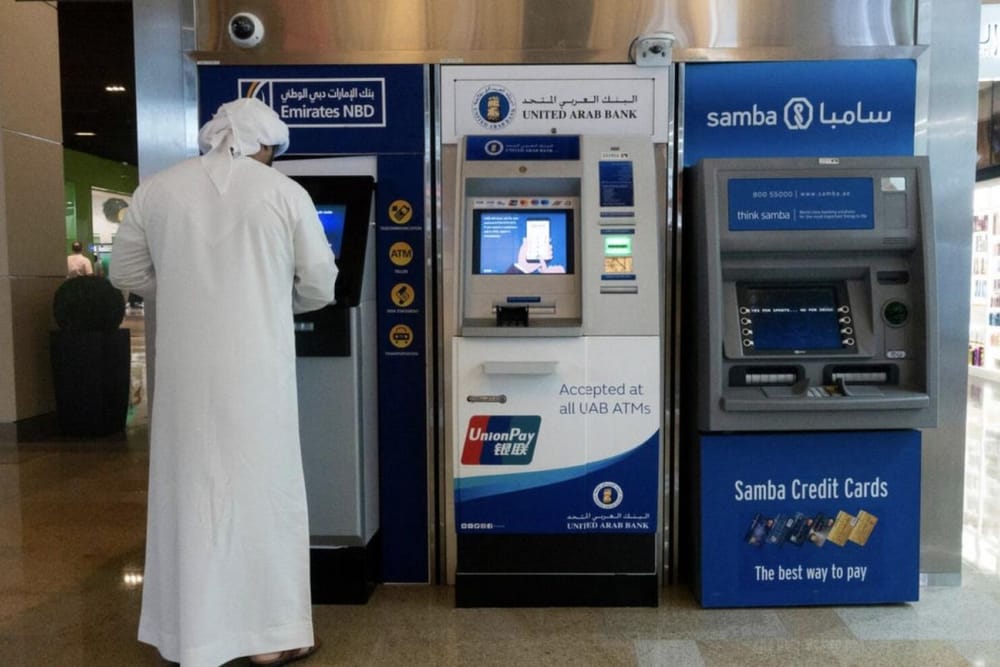The UAE’s banking sector “cautiously anticipates a favorable outlook” on the back of stable interest rates, declining bad loans, and a robust GDP in 2024 after recording a year of increasing profitability and higher returns ratios in 2023, financial market analysts at leading professional services firms said.
Profitability of the top 10 lenders jumped 28.8 percent year-on-year (YoY) for 2023 on the back of a rising interest rate scenario, Alvarez & Marsal said. The combined net income of banks increased 54.1 percent to Dh76.9 billion. This was primarily due to higher interest income, significant growth in advances, expanded net interest margins, and improved asset quality, according to A&M’s UAE Banking Pulse report, which examined data from the 10 largest listed banks in the UAE, comparing the FY’23 results against FY’22 results.
“Our analysis reveals a healthy showing among banks in 2023, with many institutions experiencing an increase in profitability and stronger return on investment metrics; the year, however, ended on a slower 4th quarter,”
said Asad Ahmed, A&M managing director and head of Middle East Financial Services.
“Looking ahead, as the Central Bank of the UAE continues to align its benchmark rate with that of the US Federal Reserve, holding steady at 5.4 percent, we anticipate a shift in the second half of 2024 when rate reversals are expected to commence. This may present some short-term margin enhancement as deposit costs are likely to reduce relatively faster in response to rate cuts compared to the pace at which asset pricing may adjust. In general, the sentiment is optimistic, though cautious given the geopolitical scenario. Given that UAE banks are mostly well capitalized, profitable, liquid, and well supported by regulators, we look forward to a stable 2024,”
said Ahmed.
Fitch Ratings noted that most UAE banks reported record profitability metrics in 2023 and “these should mostly be sustained in 2024, underpinned by widened margins, healthy liquidity and a favorable economic environment.”
S&P Global‘s ‘GCC Banking Sector Outlook 2024’ reveals a challenging yet optimistic perspective. Despite geopolitical uncertainties and potential economic headwinds, S&P expects GCC banks to maintain their well-capitalized, profitable, and liquid status. The rating agency anticipates overall stability in key metrics for GCC banks in 2024.
“Credit growth and profitability are expected to remain robust, with the UAE and Saudi banking systems leading the region. However, potential risks, including geopolitical tensions and real estate exposure remain.”
A&V report noted that loans and advances grew by 9 percent year-on-year (YoY), at a slower pace than growth in deposits of 13.4 percent YoY. Non-Interest Income (NII), increased by 27.6 per cent YoY as Net Interest Margins (NIM) expanded by 36bps YoY to 2.8 per cent due to higher benchmark rates. Net income increased 54.2 percent YoY on the back of higher operating income (+17.2 percent QoQ), improved Cost-to-Income ratio (-2.8 percent points YoY), and lower impairment charges (-19.8 percent YoY). Return on Equity (RoE) and Return on Assets (RoA) improved by 5.7 percentage points YoY to 19.9 percent and 0.6 percentage points YoY to 2.2 percent, respectively, in FY’23.
The 10 largest listed banks include First Abu Dhabi Bank, Emirates NBD, Abu Dhabi Commercial Bank, Dubai Islamic Bank, Mashreq Bank, Abu Dhabi Islamic Bank, Commercial Bank of Dubai, National Bank of Fujairah, National Bank of Ras Al Khaimah and Sharjah Islamic Bank.
According to the report, aggregate deposits for the top 10 banks grew at 13.4 percent YoY whereas aggregate loans & advances (L&A) increased by only 9.0 percent YoY in FY’23. Consequently, Loan-to-Deposit-Ratio (LDR) slipped 3.1 percentage points YoY to 74.9 percent.
Total operating income increased by 28.8 percent YoY as compared to 17.2 percent YoY in FY’22. The growth in operating income was primarily driven by NII which increased substantially by 27.6 per cent YoY. The non-funded income (+31.4 percent YoY) further supported the increase in operating income. NIM expanded by 36bps YoY to 2.8 percent due to higher yield on credit (+4.5 percentage points) to 11.5 percent in FY’23. Aggregate net interest income (+27.6 percent YoY) grew due to an increase in the Central Bank of the UAE policy rate (+100bps) during the year, the A&M report said.
News Source: Khaleej Times









